- Teach Early Years
- Teach Primary
- Teach Secondary
- New for Schools
Home > Learning Resources

Music for creative writing
- Author: James Carter
- Main Subject: CPD
- Subject: Music
- Date Posted: 24 August 2012
Share this:
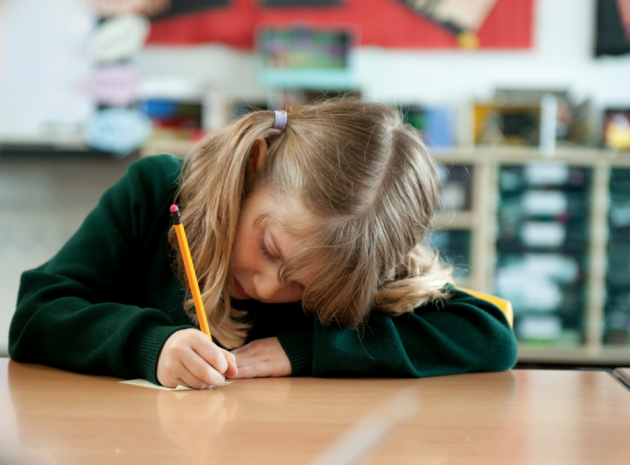
Playing instrumental tracks as children write will free their minds to wander down some unexpected and creative avenues, says James Carter..
Over the past 10 years I have visited more than 1000 primary schools and have seen a welcome increase in the number of practical music activities taking place, which is wonderful. But as a poet and someone who is deeply concerned with children’s reading and writing, I would like to see more primaries using music in the context of creative writing.
When music is a regular feature of creative writing sessions the results can be stunning. Played in the background, music helps children to become lost in what I call the ‘fog of their creativity’ – allowing their thoughts to wander into many interesting and unexpected places.
I first started to experiment with this approach whilst working as a lecturer in creative writing at Reading University, where I encouraged classes to actively listen to music and write in direct response to what they heard.
I was in the habit of taking in photos, postcards and pictures from magazines as a starting point for writing. Then one innovative student, now a KS2 teacher, suggested I also bring in some music. As a result, I began playing the students ambient music by Brian Eno (in particular, his sublime Apollo soundtrack, much used in TV adverts and documentaries). It was a fantastic success. The writing students produced was wholly different to anything else they had done previously. They were taking more risks, writing more freely and openly, and seemed less inhibited and more – dare I say – creative.
Keen to share this experience, and because I couldn’t find an existing resource, I began work on what was to become Just Imagine (Routledge, 2012, second edition): a book of images and ideas for stimulating creative writing, with an accompanying CD of music, for both primary and secondary teachers.
The Just Imagine CD features 11 instrumental tracks that I assembled with my good friend, the TV and internet composer Mark Hawkins. These are of varying genres and styles – from gentle ambient pieces to upbeat African soukous. Four are ‘soundscapes’: instrumentals with sound effects such as trains, church bells, distant voices, bird noises, footprints in snow, etc. It is the intention that all these pieces will generate a variety of responses in the listener’s mind’s eye – including images, narratives, events, words, phrases, memories, thoughts and emotions. Any language is valid, for this activity is all about generating fresh, raw material that can later be refined and crafted.
Choosing music for creative writing
Songs with lyrics do not work for this purpose; the lyrics are too intrusive. The language and subject matter guide the mind and take away the autonomy and freedom it requires. Instrumental tracks taken from any genre and originating from all parts the world can be used: the overriding feature I look for is atmosphere, something that generates mental pictures or a creates a distinct mood.
Why not pop over to YouTube, Spotify or iTunes and check out some movie soundtracks? You should ideally choose something that children will have not heard before (i.e. nothing from Disney, Pixar or Dreamworks’ film) so they won’t have automatic associations.
When I use music as a creative stimulus in classroom workshops, I let children hear a track at least twice. I am rarely prescriptive in content and merely request that pupils concentrate fully on what they can hear and write in response. I offer advice such as, “You might want to write a short poem; an opening to a story; a drama; a description; a list – anything at all that comes to you.” I also encourage the children to write without ‘thinking’ and immerse themselves in the music.
Just occasionally, I may play a track that could be used to inspire a narrative, and I might decide to write the words ‘Who?’ ‘Where?’ ‘What?’ ‘When?’ ‘Why?’ on the board to help the group generate some good story material.
Because the boundaries are open and stabilisers off, the results are very varied. A few children write nothing at all; used to writing to set templates and fill-in-the-gaps structures, they don’t know what to write without specific guidance. Or perhaps equally valid, responding to music is not for them. (I’m always conscious of this and try to reassure children by telling them that some weeks I can’t stop writing, and then for a few months I can barely get started at all. Children need to know that creative writing is not automatic; it will not always happen, yet other times it will, and there is no real logic to this.)
Some children write whatever is on their minds, or what amuses or preoccupies them. Even a quiet, ambient track can inspire a multiplicity of forms, tones and voices. Some children might write a silly Spike Milligan rhyme, others a reflective free verse poem, and there will be pupils who simply list all the sounds and instruments they can hear. All of this is good, if not essential. Children need this empty, quiet time to reflect, to mentally roam and to write, irrespective of the quality of the end product.
It is the deep enjoyment of the process that matters.
Clearly, the initial outcomes from these music-as-a-stimulus-sessions will be first drafts. Because of this, teachers might choose to play the music continuously during a session, ask children to go back over what they have written, expand upon ideas and phrases, lose anything unnecessary, and work, tweak and polish their creations. But hey, why not leave it at a first draft? Let the right brain dominate for once.
Those children that really let go with these music sessions are frequently surprised by what they have written. When they read their work out, I will often respond with “Wow! Where did that idea come from?” To which I invariably get the response, ‘I don’t know! I’ve never written anything like that before.” Kerching! That’s creative writing.
Music, like no other stimulus, allows children to get into an unconscious writing state, one in which they don’t even realise they are writing as they are so absorbed in the magical process of writing.
You may also be interested in...
- Download your free digital copy of the brand new January issue of Teach Primary now
- Teach Primary Awards 2019 Finalists Announced
- Oxford University Press celebrate double victory
- Free resources for teaching film in primary schools
- National Curriculum Key Stage 2 assessments reveal increased attainment in primaries
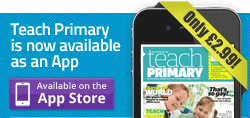
Subscribe to Our Newsletter
I agree to the Terms & Conditions and Privacy & Cookies Policy.
Tried & Tested

Power Maths – A Child-Centred, ‘Can-Do’ Mastery Teaching Programme for KS1 and KS2
Category: Maths

Fit To Dance Schools From Disney On Ice
Category: Other

‘S!ng Sensational’ And ‘A King Is Born’ – Two Fun New Musical Masterpieces That Children Will Love
Category: Music

Product review: Schofield & Sims Fractions, Decimals & Percentages
See all Tried & Tested products
Recommended for you...
If your marking doesn’t affect pupil progress - stop it!
Ace-Classroom-Support
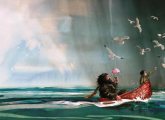
How to use Harry Potter to engage high-ability learners
Ace-Languages

Do Primary Children Need Lessons in Money?

Supporting parents with maths
Follow us on Twitter @teachprimary :
Share teach primary:.
Home | Tried & Tested | Interactive | Book Reviews | Resources | News | Hot Products | Advertising Contact Us | Primary Resources | Primary Teaching Resources | Privacy Policy

Copyright 2024 Artichoke Media Ltd
Registered in England and Wales No 14769147 | Registered Office Address: Jubilee House, 92 Lincoln Road, Peterborough, PE1 2SN

- Share full article
Advertisement
Supported by
Nine Teaching Ideas for Using Music to Inspire Student Writing

By Natalie Proulx
- May 10, 2018
Some of the greatest written works of our time have been inspired by music. Walt Whitman conceived of and wrote “Leaves of Grass” while listening to opera . Alice Walker, Langston Hughes, Ntozake Shange and Ralph Ellison were all moved by spirituals, jazz and blues . And Lin-Manuel Miranda’s rap musical “Hamilton” was born of his love of hip-hop . These writers understood what many educational researchers know — that music opens up pathways to creative thinking, sharpens our ability to listen and helps us weave together disparate ideas .
In this teaching resource, we suggest nine exercises to use music to inspire student writing — from creating annotated playlists and critical reviews to music-inspired poetry and personal narratives. Each idea pulls from Times reporting, Opinion pieces and multimedia on music to give students a place to start. The activities are categorized according to three genres: creative and narrative writing; informative and explanatory writing; and persuasive and argumentative writing.
How do you use music in your classroom? Let us know in the comments.
Creative and Narrative Writing
Exercise #1: Write a story or poem inspired by music.
One way you might let your students be inspired by music is to have them describe in words what they hear, a method Jean-Michel Basquiat employed in his poetry and paintings.
In “ Bowie, Bach and Bebop: How Music Powered Basquiat ,” Ekow Eshun writes:
In 1979, at 19, the artist Jean-Michel Basquiat moved into an abandoned apartment on East 12th Street in Manhattan with his girlfriend at the time, Alexis Adler. The home, a sixth-floor walk-up, was run-down and sparsely furnished. Basquiat, broke and unable to afford canvases, painted with abandon on the walls and floor, even on Ms. Adler’s clothes. The one item that remained undisturbed was Ms. Adler’s stereo, which had pride of place on a shelf scavenged from the street. “The main thing for us was having big speakers and a blasting stereo. That was the only furniture I purchased myself,” said Ms. Adler, who still lives in the apartment. When Basquiat was around, she recalled, “music was playing all the time.” On Thursday, the exhibition “Basquiat: Boom for Real” opened at the Barbican Center in London. The show focuses on the artist’s relationship to music, text, film and television. But it is jazz — the musical style that made up the bulk of Basquiat’s huge record collection — that looms largest as a source of personal inspiration to him and as a subject matter.
Invite your students to read the article and then listen to the Times-curated Spotify playlist “ The eclectic taste of Jean-Michel Basquiat ” as they view his art and read his poetry . Discuss what they notice about the musical influence in Basquiat’s work. How do the content, colors, textures and shapes in his paintings resemble the sounds they hear? How are these reflected in the words, phrases, mood and rhythm of his poems?
We are having trouble retrieving the article content.
Please enable JavaScript in your browser settings.
Thank you for your patience while we verify access. If you are in Reader mode please exit and log into your Times account, or subscribe for all of The Times.
Thank you for your patience while we verify access.
Already a subscriber? Log in .
Want all of The Times? Subscribe .
Classroom Stars
10 Creative Writing Activities to Spark Magic in Your KS2 Primary Classroom
- 12 Jun 2024

Keeping KS2 pupils engaged with writing can sometimes feel like wrangling a roomful of kittens. But fear not! This blog post is here to reignite the writing fire with ten exciting activities that will have your learners crafting captivating stories, persuasive arguments, and beautiful descriptions in no time.
In the age of instant messaging and short-form content, nurturing a love for expressive writing is more important than ever. These activities cater to various learning styles and interests, while sneakily reinforcing key literacy skills like vocabulary development, sentence structure, and creative thinking. So, grab a pen, gather your pupils, and get ready to unleash their inner wordsmiths!
Now, let’s dive into the 10 activities and explore how they can spark magic in your classroom:
Picture Prompts Find captivating images online or in old magazines. Historical scenes, fantastical landscapes, funny animals, or even abstract shapes all work well. Project the image on the board or provide individual copies. Give children a set amount of time to study the image and jot down any thoughts, ideas, or emotions it evokes. Then, have them write a story inspired by the image. Encourage them to consider the setting, characters, plot, and mood based on their observations.
Character Interviews This activity helps develop well-rounded characters with strong voices and personalities. Have pupils brainstorm character ideas – they could be historical figures, fictional heroes, or even everyday people with interesting jobs. Once they’ve chosen a character, learners can write a list of interview questions to get to know them better. What are their hopes and dreams? What are their biggest fears? Finally, children write the interview itself, embodying the voice of their character in their responses.
Setting Showdown This activity challenges pupils to adapt their writing style and vocabulary to fit different environments. Choose two contrasting settings – a bustling city square at rush hour versus a deserted island paradise, or a spaceship hurtling through space compared to a cozy cottage nestled in a forest. Have learners write a story that takes place in both of these contrasting settings. This could be a single character experiencing both environments or two separate stories linked by a common theme.
Sentence Swap This is a fantastic activity to show learners the power of sentence structure and word order. Write a short paragraph on the board, with several sentences. This could be the opening of a story, a news report, or a descriptive passage. Challenge children to swap the sentences around in different orders. Have them read the paragraph aloud after each swap to see how it changes the flow and meaning of the text. Discuss as a class how sentence order can build suspense, create emphasis, or simply improve the rhythm of the writing.
News Flash! This activity brings historical events or fictional scenarios to life and helps children with factual writing and research skills. Present learners with a historical event they might not be familiar with (the invention of the printing press, the eruption of Mount Vesuvius) or a fictional headline from a fantasy world ( “Dragons Take Over Local Bakery!”). Have pupils research the event or brainstorm the details of the fictional scenario. Then, have them write a news report on the event, complete with a catchy headline, factual information, and quotes from “witnesses” (real or imagined).
Poetry in Motion This activity is a wonderful way to bridge the gap between visual imagery and written language. Show pupils a short video clip that is particularly evocative or visually stimulating. This could be a nature documentary scene, a silent movie chase sequence, or even an abstract animation. After watching the clip, give learners some time to think about what they saw and how it made them feel. Then, have them write a poem capturing the essence of the video clip. Encourage them to use vivid language, figurative speech, and sound devices to bring their poem to life.
Dear Diary… This activity is a fantastic tool for character development and creative storytelling. Ask children to choose a historical figure, fictional character, or even an inanimate object (a tree in the schoolyard, a forgotten toy in the attic). Have them write a series of diary entries from the perspective of their chosen subject. These diary entries should reflect the character’s thoughts, feelings, and experiences. For historical figures, pupils can research real diaries or letters to guide their writing.
The Persuasion Game This activity hones persuasive writing skills and encourages pupils to think critically about different viewpoints. Give learners a product, idea, or policy (flying cars, a four-day school week, uniforms in school) and have them choose whether they are for or against it. Then, have them write a persuasive letter arguing their chosen viewpoint. This letter should be addressed to a specific audience (e.g., the government, parents). Pupils should use strong arguments, factual evidence, and persuasive language to convince the reader of their point of view.
Comic Strip Capers This activity is a fun and engaging way to introduce learners to graphic novels and comic book storytelling. Provide pupils with a simple comic strip template, with a set number of panels. Challenge them to write a short story using illustrations and dialogue within the panels of the comic strip. This can be a humorous story, a dramatic scene, or even a factual account of a historical event.
Six-Word Stories This activity is a fantastic challenge for creative thinking, conciseness, and impactful writing. Challenge children to write a complete story in just six words! This forces them to think carefully about their plot, characters, and setting, and to deliver their message in an impactful way. Six-word story prompts can be provided to get pupils started (e.g., “Lost princess finds happy robot friend”, “Last human wanders through ruined city”).
Remember, the key is to make writing fun, engaging, and relevant to your children’s interests. With a little creativity, you can transform your classroom into a vibrant writing workshop where imaginations soar, and words truly come alive!
If you liked this post, you may like Beyond the Classroom Walls: 15 Outdoor Learning Activities for Key Stage 1 .
More articles

It’s Easter Time! 15 Enjoyable Easter Activities and Ideas for the Primary Classroom

Primary Education Jargon: A Glossary for Parents of All the Terms Used in Schools

How does the UK Primary National Curriculum Compare and Contrast with the United States and Australia?

The Wonders of World Book Day and Ideas for how to Celebrate it with Your Primary School

Ten Delightful Activities and Ideas to Celebrate Mother’s Day with Primary School Children

Establishing a Bully-free Environment in Primary Schools: A Guide for Teachers and Parents
Liked this read.
Why not be in the loop and sign up to our newsletter? You’ll receive all the latest educational news, teaching and learning ideas, and heartfelt stories that we post on our blog.
Access all of our resources
Classroom Stars is proud to support incredible teachers just like you. Why not become a member and gain access to ALL of our primary resources for your classroom?
You have subscribed to our newsletter!
You have joined the list to receive our newsletter! Be sure to look out for all our latest resources, news and reads from our blog.
To access you need to have a Classroom Stars membership.
New password created
Your new password has been created. A confirmation email has been sent to you.
Check your email
We have sent you an email with a link to create a new password.
Remember to check the junk folder in case the link was sent there.
Your message has been received
Thank you for getting in contact with us! A member of our team will do their best to get back to you as soon as possible.

Request for school membership received
Thank you for providing us with your details. A member of our team will get back to you as soon as possible with the next steps.
Email address updated
Your email address has been updated. A confirmation has been sent to your previous email address.
Download your free resource pack
Thank you for joining the list to receive our newsletter! Click below to download your free sample resource pack.
Your privacy
We use cookies to improve your experience and our website. By continuing to use Classroom Stars, you agree to our usage of cookies, as defined in our Privacy Policy .
- International
- Education Jobs
- Schools directory
- Resources Education Jobs Schools directory News Search
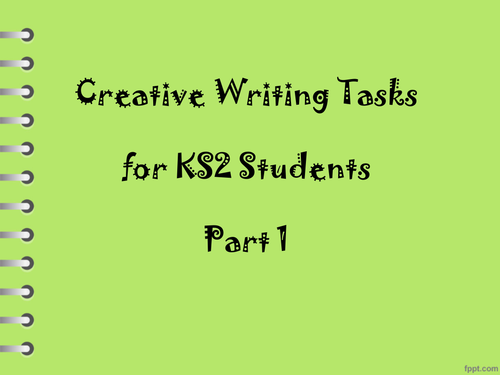
Creative Writing Tasks for KS2 Students
Subject: Creative writing
Age range: 7-11
Resource type: Worksheet/Activity
Last updated
7 March 2016
- Share through email
- Share through twitter
- Share through linkedin
- Share through facebook
- Share through pinterest

Creative Commons "Attribution"
Your rating is required to reflect your happiness.
It's good to leave some feedback.
Something went wrong, please try again later.
Very helpful .Thank you.
Empty reply does not make any sense for the end user
Thanks for these. There are lots of interesting ideas and I am sure I will be making use of this resource.
fairlyquasi
This is lovely ! Thank you
Fantastic resource. Thank you so much.
Report this resource to let us know if it violates our terms and conditions. Our customer service team will review your report and will be in touch.
Not quite what you were looking for? Search by keyword to find the right resource:
25 Creative Writing Prompts For KS1 And KS2
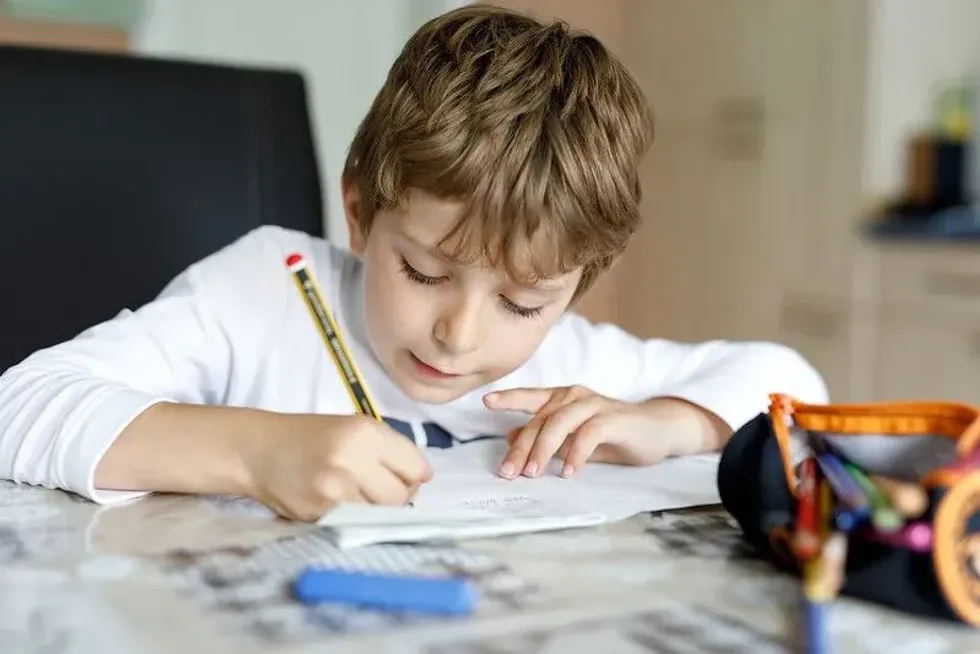
Teaching children the benefits of learning to write creatively is a fantastic way to boost their confidence and help them develop reading and problem-solving skills.
With the right resources and stimulating prompts, children come up with new and exciting ideas for stories and are encouraged to consider all the different elements of storytelling.
Encourage your young authors to find a cozy corner dedicated to study and let their imaginations run wild with these fun writing prompts designed to spark joy and creativity in every word they craft.
Top Tip: Why not check out this post written by a real children's author, with many more tips on how children can write their very own storybooks?
Writing Ideas For Key Stage One Children (Ages 5-7)
With KS1 children, it's a great idea to use their interests and surroundings as inspiration for their creative writing. Coming up with a whole new story can be a big challenge, so the ideas and activities are aimed to help KS1 children to consider one or two things they are really interested in writing, before they create their stories:
- Imagine your favourite toy came to life! What would a day in their life look like? Where would they go and what would they get up to? What would their favourite meals be, and what would their voice sound like?
- Describe the place you live as if you were talking to an alien from another planet. How can you recognise where it is? What is inside? What are all the different things used for and what are some funny human habits that aliens would find interesting?
- Write about the best day out ever. It can be real or just a fantasy day out that you would love to do in the future.
- Imagine a monster came over for dinner. What would they look like? What is their name? What would they eat and how would they eat it?
- Write a letter to your favourite character. Whether it's from a movie, TV show, book or play, imagine what you would write if they were your pen pal.
- Design your own animal, and write a short description about it. Maybe it has lots of fangs, or pink fur. Perhaps it's a mixture of lots of other animals. Draw out a picture of your animal, and then write a short paragraph to describe what it's called, where it lives, what it eats and what it does for fun!
- Think about your favourite book character. Write a short story about what they got up to after the end of the book.
Develop these ideas further by:
-Incorporating the creatures you've invented into a new story.
-Making illustrations to accompany your description of your day out.
-Storyboarding your ideas, to make a cartoon-like sequence of events with images and text.
Writing Ideas For Key Stage 2 Children (Ages 7-11)
Even if English isn't their favourite subject, there are lots of ways to help KS2 aged children get interested in storytelling and creative writing. By allowing kids to select their own books to read away from the classroom, they can figure out which genres and writing styles they enjoy the most.
Exposing children to new ideas and techniques through encouraging reading books, will also, in turn, help their writing abilities to blossom.
A good way to prepare children for these activities is to search online for books they enjoy, and let them pick one or two to read.
This will allow them to get familiar with the type of writing they enjoy. The following ideas are suggestions intended to aid creative thinking and spark inspiration for whatever direction children want to take their stories in:
- What would a day on Earth be like if mythical creatures existed? What would day-to-day be life if dragons, unicorns, mermaids and fairies wandered the streets? Write a short story about a day in your life, if mythical creatures were around.
- Imagine you were small as a bug. Describe the world from your new perspective. Do you have interactions with people? Insects or animals? Where do you go? Do you discover you have any insect-like abilities?
- Imagine you woke up one day with a superpower. What is it? Are you able to turn invisible, read minds, or fly? What is the first thing you would do with your new power and what would a day in your life look like?
- Write a diary entry as if you had travelled to another period of time. Is it Victorian England, Ancient Egypt or perhaps the Middle Ages? How do you blend in, and what new things do you learn?
- A rocket launches you to an unknown planet. You find a civilisation of aliens have already made it their own and they welcome you. Describe your experience, what you see, and what happens next. Write a short story about your adventures.
The following prompts are suggestions of an opening line that kids can use at the beginning of their story, and continue on from:
- 'The dark figure began to emerge from the mist. She could see the outline of a human-like figure as it started to get closer...'
- 'Simon did his homework, liked skateboarding and his favourite food was pizza. He thought he was an ordinary boy, until...'
- 'Deep beneath the North Sea, hidden away from human eyes, lies a great secret...'
- 'The door was painted white, with cracked paint and a small golden handle. I couldn't help but wonder what was inside...'
- 'The sun was shining, the birds were singing and the street outside was hot and quiet. But everything was about to change...
Develop these ideas by:
-Creating illustrations to go alongside your story. Show what your characters and landscapes would look like, and make them correspond with the story.
-Thinking about other books you've been reading. How would the character you've written interact with a character from one of your favourite books?
-Making a character profile of the characters in your stories. What are their interests and hobbies? What do they like to wear? What books and films do they like? Create a drawing of your character in the middle of the page, and label different things about them in a profile down the side.
-Doing a character swap. Imagine your character found themselves in the world of another book, or vice versa. What would happen next?
-Design a front and back cover for your book. Consider the title, blurb and cover illustrations. Perhaps even make an author profile too!
For five quick and easy creative writing tasks, download your prompt sheet below!
We Want Your Photos!
More for you, 13 super easy activities for kids at home with no equipment, fresh family ideas for spring activities, 17 fun family hobbies to keep everyone entertained at home.
Diploma of Education, Fine Arts, Bachelor of Arts specializing in Illustration and Visual media
Sarah Hallam Diploma of Education, Fine Arts, Bachelor of Arts specializing in Illustration and Visual media
With a Diploma in Education specializing in Fine Arts (Painting) and a Bachelor of Arts specializing in Illustration and Visual media from the University of Arts London, Sarah previously was a London-based teacher who brought her passion for art and culture to the classroom. Her creative endeavors include painting classes and experimenting with new recipes. She draws inspiration from the world around her and enjoys sharing her knowledge with others while sipping a cup of tea.
1) Kidadl is independent and to make our service free to you the reader we are supported by advertising. We hope you love our recommendations for products and services! What we suggest is selected independently by the Kidadl team. If you purchase using the Buy Now button we may earn a small commission. This does not influence our choices. Prices are correct and items are available at the time the article was published but we cannot guarantee that on the time of reading. Please note that Kidadl is a participant in the Amazon Services LLC Associates Program, an affiliate advertising program designed to provide a means for sites to earn advertising fees by advertising and linking to Amazon. We also link to other websites, but are not responsible for their content.
2) At Kidadl, we strive to recommend the very best activities and events. We will always aim to give you accurate information at the date of publication - however, information does change, so it’s important you do your own research, double-check and make the decision that is right for your family. We recognise that not all activities and ideas are appropriate for all children and families or in all circumstances. Our recommended activities are based on age but these are a guide. We recommend that these ideas are used as inspiration, that ideas are undertaken with appropriate adult supervision, and that each adult uses their own discretion and knowledge of their children to consider the safety and suitability. Kidadl cannot accept liability for the execution of these ideas, and parental supervision is advised at all times, as safety is paramount. Anyone using the information provided by Kidadl does so at their own risk and we can not accept liability if things go wrong.
3) Because we are an educational resource, we have quotes and facts about a range of historical and modern figures. We do not endorse the actions of or rhetoric of all the people included in these collections, but we think they are important for growing minds to learn about under the guidance of parents or guardians.
google form TBD
Kidadl is supported by you, the reader. When you buy through the links on our site we may earn a commission.
As an Amazon Associate, Kidadl earns from qualifying purchases.
Presentation mode. Choose what to show your class.
Share this lesson. Share this lesson across social media.
Gift this lesson to a teacher friend to give them free access for 30 days!
Share lessons with your friends and colleagues for free. Learn more
Download lesson plan in Word or PDF format.
Downloading may not be your best option. Be sure you are looking at the most up-to-date version by always viewing your resources online.
Bookmark or save the link to this lesson so you can find it quickly! Click on the format below to continue download.
- Subject leaders
- Specialists
Lesson 4: Writing lyrics
- Subjects >
- Lower key stage 2 >
Learning objective
- To create lyrics that match a melody.
Success criteria
This content is for subscribers only. Join for access today.
National curriculum
Pupils should be taught to:
Cross-curricular links
Writing – composition
Before the lesson
Lesson plan, recap and recall.
Display the Presentation: Soar. Arrange the children into pairs and ask them to tell the story of ‘Soar’ to their partner. Show them the animation again on the link: Soar by Alyce Tzue on VideoLink and discuss if there were any parts that they missed.
Extended-mode explainer videos
How to extend your display to view the lesson page and preseantion mode simultaneously. Choose your operating system below to watch the video
If you need further support with extending your display, please contact [email protected] .
Extended-mode explainer video: For Mac
Extended-mode explainer video: For Windows
Adaptive teaching
Pupils needing extra support
Could start by making a list of rhyming words related to their screenshot/section of animation which can then feed into the lyric writing process.
Pupils working at greater depth
Should be writing and leading their group in the discussions over lyrics.
Assessing progress and understanding
Vocabulary definitions.
A song which tells a story - similar to a poem.
To create an original piece of music.
In this unit
Assessment - Year 3: Ballads
Lesson 1: What is a ballad?
Lesson 2: Performing a ballad
Lesson 3: The story behind the song
Lesson 5: Singing my ballad
Originally created by:
Music specialist
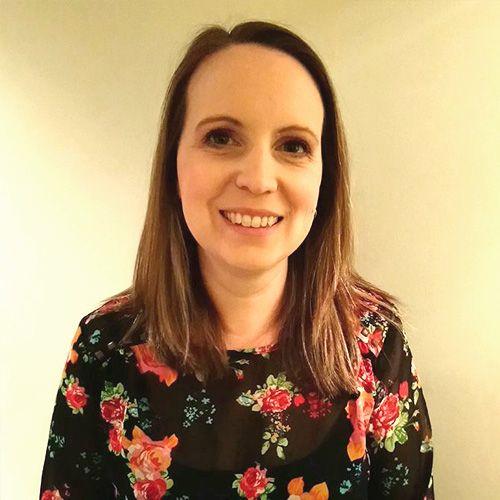
Maintained by: Kapow Primary team
Last update: 4th December, 2023
Related content

IMAGES
VIDEO
COMMENTS
Also included are notes re: which features to include to make writing more expressive. Key features include: examples of creative language choices/vocabulary in order to create mood/atmosphere/setting. Illustrates expaned noun phrases/adverbials/varied sentence structures. Suitable for KS2. Further descriptive paragraphs can be found at following:
Listen to this while writing about: a fantasy story with a happy ending.
That's creative writing. Music, like no other stimulus, allows children to get into an unconscious writing state, one in which they don't even realise they are writing as they are so absorbed in the magical process of writing. Visit Teach Primary Magazine for free lesson plans, news, events, product reviews and KS1 and KS2 learning ...
Quiet writing music for classroom assists students to be calm and focused, and is ideal relaxing music for kindergarten. Calm Kids Classroom's reading music ...
Listen to this while writing about: dreams, plans, and tomorrow.This is a nice blend of two happy songs designed for kids to listen to while writing.I use th...
Alice Walker, Ntozake Shange, and Langston Hughes, were all inspired by spirituals, jazz, and blues. These writers understood that music opens up pathways to creative thinking, that can help us weave together thoughts and ideas. We already know that music inspires creativity--especially creative writing. But how can we use music to inspire ...
The video tells the story of a milk carton trying to find a missing son to reunite him with his family. The carton encounters numerous different challenges both good and bad but nothing stops him on trying to complete his mission. Ask the children to write the journey of the milk carton in 1st person.
This piece from the soundtrack of Toy Story 3 is fast, exciting and adventurous. The music accompanies a scene in the film where Andy, the young boy who owns Woody and Buzz, is playing with all of his toys. Teaching ideas: Ask children to create a graphic score on a scrap piece of paper. If you're not sure sure what a graphic score is there are ...
Calm piano music [#1903]: Your piano background music tune for studying, writing, coding, reflecting, planning and any creative and mind work. This peaceful ...
Exercise #1: Write a story or poem inspired by music. Jean-Michel Basquiat, pictured in 1981, painted and wrote poetry to Bach, Bowie and bebop. Related Article Edo Bertoglio, via Maripol/Artestar ...
Playlist for Music/Songs with Words. Adele - Hello. Adele- Rolling in the Deep. Adele - Someone Like You. Alicia Keys - Girl On Fire. Alicia Keys - No One (lyrics) Aloe Blacc- The Man. Aloe Blacc - Wake Me Up. Andra Day- Rise Up.
Now, let's dive into the 10 activities and explore how they can spark magic in your classroom: Picture Prompts. Find captivating images online or in old magazines. Historical scenes, fantastical landscapes, funny animals, or even abstract shapes all work well. Project the image on the board or provide individual copies.
KS2 Narrative Writing- Titanium Music Video. This is a ppt I have created for a Y6 writing day, focusing on the music video 'Titanium'. The children absolutely love the video and responded really well to the tasks. In addition to the writing day slides, the ppt also has a WAGOLL slide for each section of the story, past examples and success ...
ppt, 5.43 MB. ppt, 5.36 MB. You can find 48 creative writing tasks with picture prompts in these ppts. Unlike technical, academic, and other forms of writing, creative writing fosters imagination and allows students to have a voice. Therefore, it is one of the most effective ways to enhance creativity in the classroom.
KS2; Join now; Topic of the Day; School memberships; Members' Area; My Folder; Music: The right note Add to My Folder. ... Combine music with creative writing for some inspirational literacy activities. Many composers have used music to tell a story. Music has incredible power to create atmosphere, feeling and mood. In fact, as the writer ...
A collection of imaginative resources to get primary school children started with creative writing! ... Music & Dance. Sports & Active Play. Toys & Games. Fun Facts. Animals & Nature. ... 25 Creative Writing Prompts For KS1 And KS2. Jul 11, 2024 By Sarah Hallam. Originally Published on May 13, 2020
Subjects. Art and design Computing Design and technology French Geography History Music Spanish Religion and worldviews. In this KS2 Music lesson, pupils collaborate to write song lyrics, crafting a story to fit a melody. Get creative in your music classes with video help.